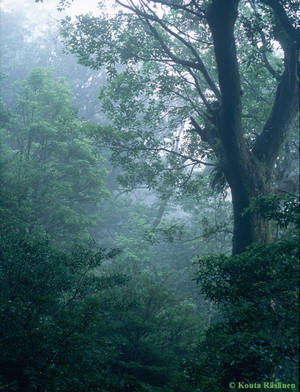- AUSTRALIA: NEW SOUTH WALES
- AUSTRALIA: QUEENSLAND
- AUSTRALIA: TASMANIA
- Evercreech Forest Reserve
- Franklin-Gordon Wild Rivers National Park
- Lower Coles Road
- McDougall’s Road
- Reynold Falls Nature Recreation Area
- Styx Tall Trees Forest Reserve
- Tarkine
- AUSTRALIA: VICTORIA
- AUSTRIA
- BOSNIA-HERZEGOVINA
- BULGARIA
- Baiuvi dupki-Dzhindzhiritsa Nature ReserveNEW
- Boatin Strict Nature Reserve - NEW !!
- Dzhendema Strict Nature Reserve - NEW !!
- Parangalitsa Strict Nature Reserve - NEW !!
- Rila Monastery Forest Reserve - NEW !!
- Steneto Strict Nature Reserve - NEW !!
- CANADA: ALBERTA
- CANADA: BRITISH COLUMBIA
- Carmanah Walbran Provincial Park
- Clayoquot Sound Biosphere Reserve
- Glacier National Park
- MacMillan Provincial Park
- Pacific Rim National Park Reserve
- Yoho National Park
- CANADA: NOVA SCOTIA
- CANADA: ONTARIO
- Lake Superior Provincial Park
- Michipicoten parks
- Quetico Provincial Park
- Rainbow Falls Provincial Park
- CANADA: SASKATCHEWAN
- CROATIA
- CZECHIA
- DENMARK
- FINLAND
- Helvetinjärvi National Park
- Isojärvi National Park
- Kurjenrahka National Park
- Patvinsuo National Park
- Petkeljärvi National Park
- Pyhä-Häkki National Park
- Urho Kekkonen National Park
- Vätsäri Wilderness Area
- GEORGIA
- GERMANY
- Bavarian Forest National Park
- Fauler Ort Nature Reserve
- Hainich National Park
- Harz National Park
- Heilige Hallen Nature Reserve
- Jasmund National Park
- Müritz National Park
- Rhön Biosphere Reserve
- IRAN
- JAPAN
- MONTENEGRO
- PORTUGAL
- ROMANIA
- SLOVAKIA
- Boky National Nature Reserve
- Dobroč National Nature Reserve
- Havešová National Nature Reserve
- Stužica National Nature Reserve
- SPAIN
- SWEDEN
- UNITED STATES: CALIFORNIA
- Humboldt Redwoods State Park
- Kings Canyon National Park
- Mokelumne Wilderness
- Prairie Creek Redwoods State Park
- Sequoia National Park
- Yosemite National Park
- UNITED STATES: MICHIGAN
- UNITED STATES: WASHINGTON
- Goat Marsh Research Natural Area
- Mount Rainier National Park
- Olympic National Forest
- Olympic National Park
- UNITED STATES: WYOMING

Yakushima Wilderness Area, Japan
Yakushima is an island south of Kyushu, the southernmost of the four main islands of Japan. A large part of it has been nominated as a World Heritage Site. Wood has been extracted throughout most of the WH site, but in the small (12 km 2 ) Wilderness Area on the western slopes of the island, there has been no tree cutting 1 . The Wilderness Area comprises a mountain valley with very steep slopes.
On the lower slopes, forests are composed of evergreen angiosperms, most notably
Castanopsis cuspidata
(Japanese chinquapin). Higher, at an altitude of 1000 metres, annual precipitation is a tremendous 8000 mm, and the most important tree species are evergreens, either the conifers
![]() Cryptomeria japonica
(Japanese cedar) and
Cryptomeria japonica
(Japanese cedar) and
![]() Tsuga sieboldii
(southern Japanese hemlock) or the angiosperm
Tsuga sieboldii
(southern Japanese hemlock) or the angiosperm
![]() Trochodendron aralioides
(wheel tree), though a few deciduous tree species also occur, e.g.
Trochodendron aralioides
(wheel tree), though a few deciduous tree species also occur, e.g.
![]() Kalopanax septemlobus
(prickly castor-oil tree)
2
.
Trochodendron
most commonly regenerates on living and dead trees
3
, often called “nurse logs”. These forests can be called temperate rainforest
4
. The mentioned higher altitude species are easy to identify but generally tree identification is challenging, particularly because for most westerners, Japanese identification guides are unreadable. However they have superb photos (better than in any western book I have seen), and identification is often possible simply by comparing photos. J. Ohwi’s old “Flora of Japan” (in English) helps, too.
Kalopanax septemlobus
(prickly castor-oil tree)
2
.
Trochodendron
most commonly regenerates on living and dead trees
3
, often called “nurse logs”. These forests can be called temperate rainforest
4
. The mentioned higher altitude species are easy to identify but generally tree identification is challenging, particularly because for most westerners, Japanese identification guides are unreadable. However they have superb photos (better than in any western book I have seen), and identification is often possible simply by comparing photos. J. Ohwi’s old “Flora of Japan” (in English) helps, too.
Precipitation is very high throughout the year. The canopy is relatively open and the shrub layer dense. Leeches abound.
References :
1 /02e609d635ef9909091ef1700c7134f7/archive/advisory_body_evaluation/662.pdf
2 Suzuki, E. & Tsukahara, J. (1987): Age structure and regeneration of old growth Cryptomeria japonica forests on Yakushima Island. Bot. Mag. Tokyo 100 : 223-241.
3
Suzuki, E. (1997):
![]() The Dynamics of Old
Cryptomeria japonica
Forest on Yakushima Island
.
Tropics
6(4)
, 421–428.
The Dynamics of Old
Cryptomeria japonica
Forest on Yakushima Island
.
Tropics
6(4)
, 421–428.
4 DellaSala, D. A. (ed.). 2011: Temperate and Boreal Rainforests of the World. Island Press.
-

-
Stewartia monadelpha (tall stewartia) at 1160 m. Symplocos myrtacea (Japanese sapphireberry) foliage, foreground.
-

-
Ilex integra (mochi tree, small tree on left) and Daphniphyllum macropodum (small tree, right) in Cryptomeria japonica (Japanese cedar) forest at 1250 m.










